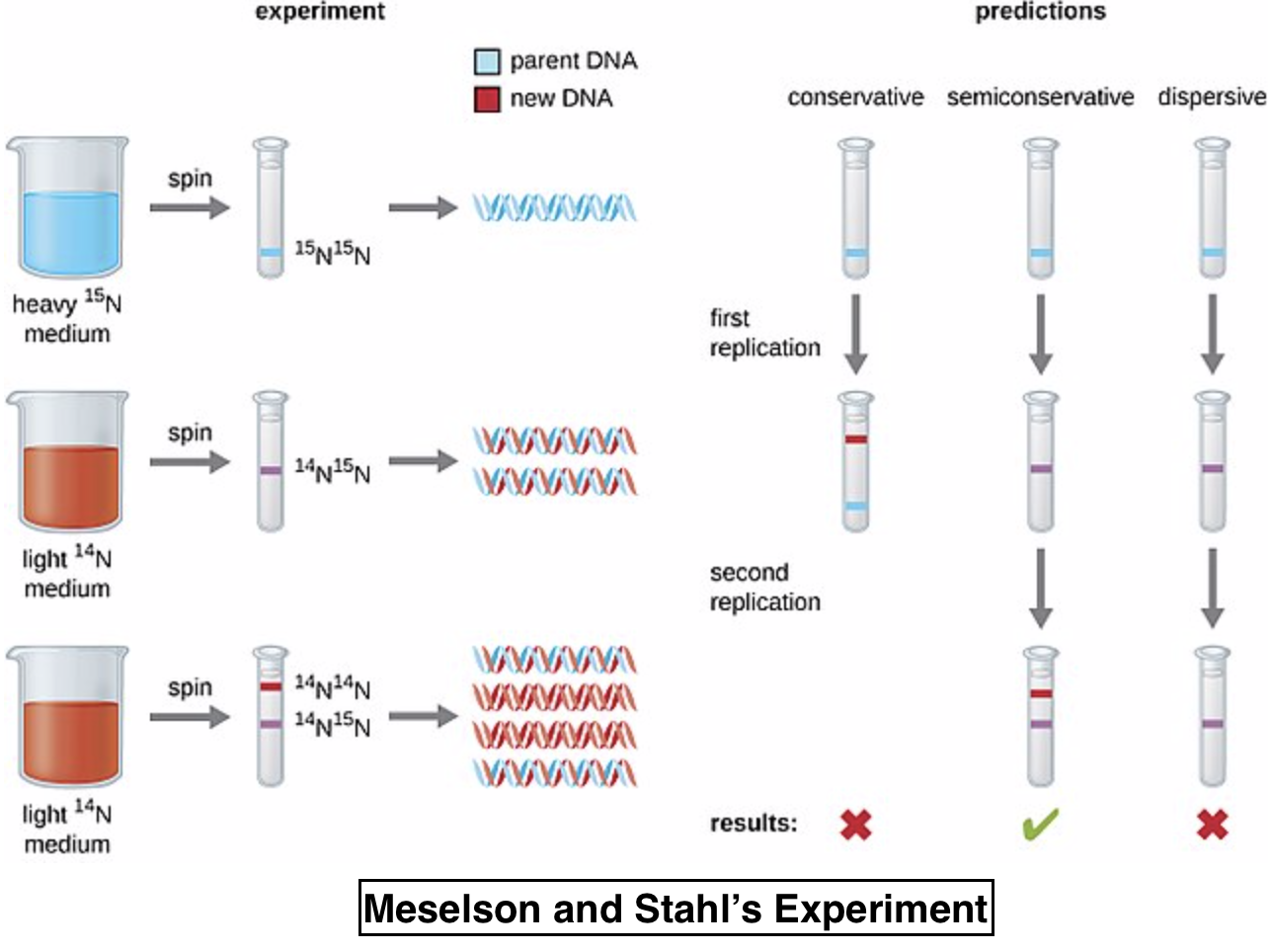Question
Question: If Meselson and Stahl’s experiment is continued for four generations in bacteria, the ratio of \(_{ ...
If Meselson and Stahl’s experiment is continued for four generations in bacteria, the ratio of 15N15N, 15N14N, 14N14N containing DNA in the fourth generation would be?
(a) 1:1:0
(b) 1:4:0
(c) 0:1:3
(d) 0:1:7
Solution
The semi-conservative nature of DNA replication was proposed by Watson and Crick but its experimental verification was done by Meselson and Stahl in Escherichia coli using a heavy isotope of nitrogen 15N and a centrifuge.
Complete Answer:
Watson and Crick explained that the parental DNA strand would act as a template for the formation of a new strand, thus each new DNA strand would have a parental strand along with a newly synthesized strand. This phenomenon was termed as the semi- conservative nature of DNA replication (as half parental DNA was conserved).

Meselson and Stahl’s experiment proving this nature is as follows:
- E.coli was grown in a 15NH4Cl medium thus allowing 15N to be incorporated into the DNA strand of this bacteria.
- Now, this bacteria was transferred to a plate containing normal 14NH4Cl where it was allowed to grow.
- Centrifugation after each generation of E.coli showed the presence of 15N14N hybrid DNA which indicated that the 15N strand of DNA came from the parental strand.
- By the time we reach the fourth generation, there will be no parental 15N15N DNA strands left as they were utilized in making the hybrid strands.
- There will be 2 strands having 15N14N i.e. hybrids and 14 strands having 14N14N i.e. pure strands.
So, the correct option is ‘0:1:7’.
Note:
- Similar experiments were performed by Taylor in faba beans using radioactive thymine in 1958.
- The centrifuge used had a CsCl density gradient.
- The time required for E.coli to produce a new generation is 20 minutes.
